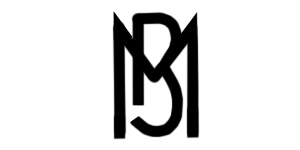About Bernard Meldahl
Learn About the brand
Bernard Meldahl was born in Denmark in 1914 and grew up in a country where design was quickly becoming a cultural identity. He studied at the Royal Danish Academy of Fine Arts, where his eye for form and proportion was sharpened in an environment that valued clarity and innovation. After completing his studies, he went to work for Georg Jensen, the silversmith firm that had set the standard for Danish modern design. The experience gave him both technical grounding and exposure to a high level of craftsmanship.<br><br> By the late 1940s, Meldahl was ready to branch out. He opened his own workshop in Copenhagen and turned his attention to enamel work, particularly guilloche enamel. This technique involved engraving intricate patterns into the surface of the metal before layering it with translucent enamel, creating vivid colors that revealed depth and movement underneath. Meldahl approached it with a modernist sensibility—his jewelry often reduced to simple, clean shapes made striking by bold contrasts of enamel.<br><br> One of his most recognizable creations became the enamel leaf. Each piece carried the crisp geometry of modern design but was softened by luminous shades of green, red, or blue enamel that seemed to echo the forests and landscapes of Scandinavia. The leaves stood out for their simplicity and strength, appealing to people who wanted jewelry that was both decorative and artistic, aligned with the midcentury aesthetic spreading across Europe.<br><br> Meldahl’s career was cut short when he died in 1950, only 36 years old. His designs, however, didn’t vanish with him. Hans Myhre, his apprentice, carried on the workshop and continued producing his work, ensuring that Meldahl’s style remained visible long after his passing.<br><br> Collectors and admirers still look to his pieces today, not only for their craftsmanship but for the way they captured the optimism and clarity of the time in which they were made. Meldahl left behind a small but distinctive body of work that reflected both precision and daring, and it continues to be valued as part of Denmark’s modern design legacy.

